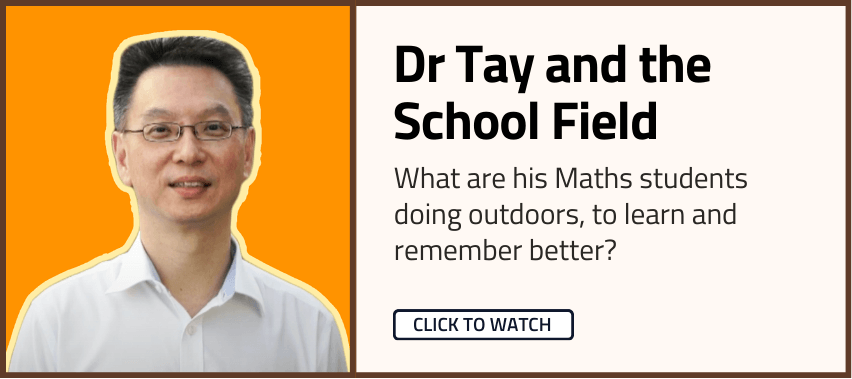Singapore students have done well in the area of creative thinking
This year, our schools received a pleasant surprise when the international PISA study put Singapore students at the top of its rankings for creative thinking.
How does PISA define Creative Thinking?
In PISA, Creative Thinking is defined as the competence to generate diverse and creative ideas, and evaluate and improve ideas that can result in original and effective solutions, advances in knowledge, and impactful expressions of imagination.
More on the PISA 2022 Creative Thinking study
Little-C and Big-C in Creativity
PISA designed tasks to measure ability in three ideation processes: generate diverse ideas; generate creative ideas; and evaluate and improve ideas. Known as “Little-C” creativity, this ability can be developed through practice and demonstrated in everyday contexts. This is in contrast to “Big-C”, which is usually associated with intellectual or technological breakthroughs and artistic or literary masterpieces.
In school, creativity abounds
How is innovative thinking infused in our teaching and learning?
Students are encouraged to generate diverse as well as creative ideas whether in curriculum, lessons, or school programmes.
They explore, examine, question, and evaluate. Then they improve on one another’s ideas and collaborate for the best solutions. And they do this in all subjects, not just in traditionally creative fields such as the arts.
In Maths Class
Students explore geometry principles with shapes that may or may not form 3D figures. Gamifying learning makes it fun and piques their curiosity, and prompts them to ask questions.
Mr Chan Zi Xian is the Head of Department, Mathematics, at Yio Chu Kang Primary School
In Physical Education
Students co-create new ways to play a sport or game.
Through teaching approaches such as Inquiry-Based Learning and Non-linear Pedagogy, they learn the necessary physical skills while exploring and problem-solving in situations where there is no fixed answer.
Mr Shang Thian Huat is the Head of Department, Physical Education and Co-Curricular Activities, at Blangah Rise Primary School.
In Science Class
The Inquiry-Based Learning approach lets student explore theories, design their own experiments and improve on them.
In Humanities Class
Any Primary 3 to 5 boy could take part in the tournament and represent his house. The students just had to put their hand up for training.
Students are encouraged to conduct historical and geographical investigations in real-world contexts.
Look what Lianhua Primary School’s students came up with when they dived into innovation!

These students created musical instruments made out of recycled carton boxes, plastic containers and toilet rolls — in the spirit of environmental sustainability.
To make sports accessible for P1s, these P6s came up with a fun take on volleyball, involving hula hoops and a beachball.



This group came up with a board game designed to teach their friends about conserving electricity.
When their creativity is challenged
A good challenge brings out the ability to make connections and problem-solve within limitations.
In and out of school, students get lots of opportunities to put their out-of-the-box thinking hats on.

At MOE’s annual Design & Technology Awards
Pour without spilling
Bakri Bin Borham from Bedok View Secondary School borrowed the principles of a gyroscope for his invention of a spill-proof jug.
No matter what angle the jug is tipped, the cup remains in a horizontal position to catch the falling water.
Bakri had seen how Parkinson’s disease could affect the body — his grandfather’s friend has hand tremors that makes pouring difficult — so Bakri wanted to help. He applied science and design concepts for his solution.

Arm in a cast? Write on
Grace Tan and her team from River Valley High School designed a tool that enables an immobilised arm to still do some writing.
Grace had fractured her arm and wanted to avoid straining her hand when writing.
She and her classmates invented WriteRight, a triangular tool that lets the fingers grip a pen while maintaining a wide arc.
At Illustratum 2024, an annual Physics competition organised by the National University of Singapore
Raise an object without touching it
Watch students demo how it is done just by using sound
Make a building safer in an earthquake
Our students explain how the tuned mass damper concept works — with the help of potato chip cans.
“Our teachers believe that all students can be creative thinkers and they have been effective in teaching the whole range of students across all our schools.”
Ms Liew Wei Li
MOE Director-General of Education
Apart from Creative Thinking, Singapore has done well in other PISA domains that measure selected 21st Century Competencies.
Singapore was ranked joint-first with Korea in Creative Problem Solving (2012) and topped the charts in Collaborative Problem Solving (2015) and Global Competence (2018).
So…Are you more creative than a 15-year-old Singapore student?
Take the test to find out!
For more interactive stories, visit Schoolbag.edu.sg



